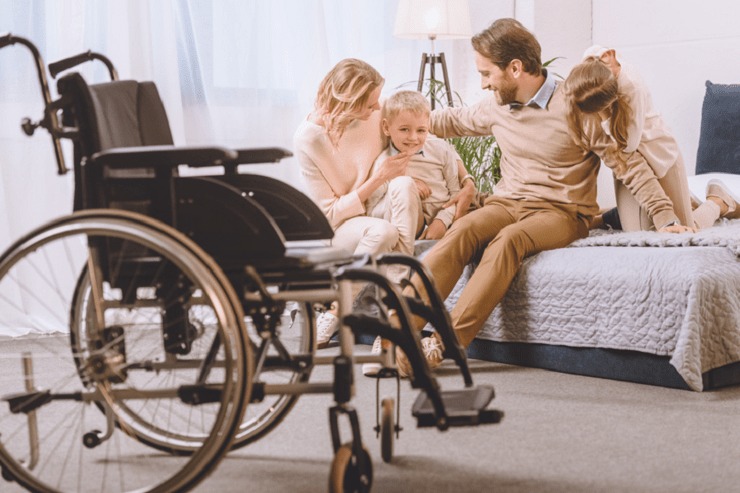Modify the Bedroom to Match Your Abilities

The bedroom can be a challenge for people who’ve had a stroke, but low- or no-cost modifications can come to the rescue. The most common challenges are entering/exiting and moving in the room, getting in and out of bed, accessing closets and drawers, and making the bed.
First, consider your options.
You may need to move to a different bedroom, if possible, with easier access or more space. Start by moving items so doors open fully. Reverse door hinges so the door opens out instead of in (if there’s more space in the hallway). Replace hinges with “swing clear” style to obtain full width of doorway. Have the doorway widened if necessary. Once you can enter the room, assess the furniture layout. If you sleep alone, move the bed against a wall to open up floor space.
In general, closets are easier to access than drawers, particularly if you use a wheelchair. Ditch the dresser and install a lightweight folding closet door. Open shelves or shelves with lightweight bins make getting dressed easier. Install a low hanger rod in the closet so you can easily hang or retrieve clothing (at about 42 inches off the floor). Install a battery-powered “touch light” in the closet for better lighting. And keep a reacher in the closet to access items stored on high shelves.
Getting in and out of bed or changing positions can be tiresome. Sleeping on the other side of the bed may make it easier to move between lying down to sitting. Habit may dictate the side on which you sleep. You might be surprised that making a change can reduce the assistance you need to get out of bed.
Layers make more work when making the bed. Replace blankets and bedspreads with a comforter in a duvet. A duvet is a cover that the comforter fits into, usually with button or Velcro fasteners; visualize two sheets sewn together on three sides that just fit the comforter. A comforter with a duvet can be used with no other covers or top sheet, just a bottom sheet, and only the duvet has to be washed regularly.
Don’t overlook easy access to a phone. Keep a cell phone or “corded” phone within reach at bedside. If there’s a power outage or an extreme weather event, cordless phones and internet phones won’t work.
If you need help figuring out a plan, consider consulting an occupational therapist who offers home modification consultations.




